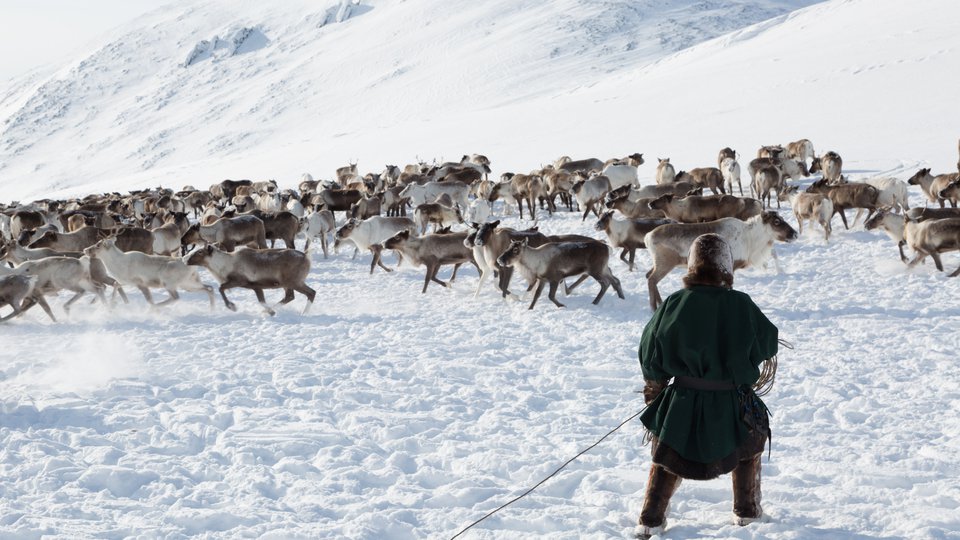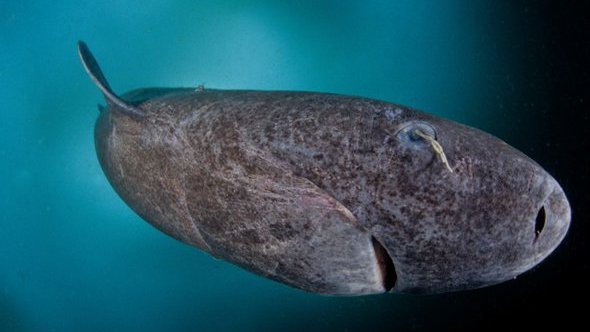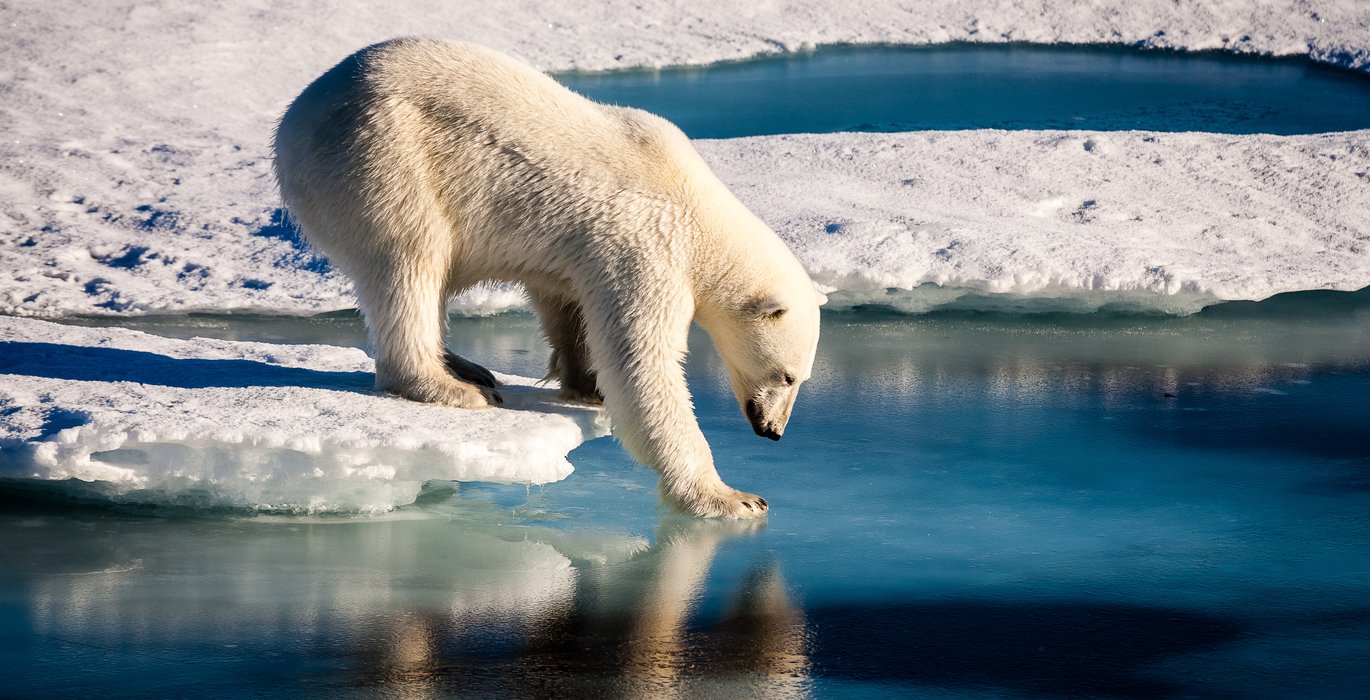
A polar bear waits by a small hole in the ice. Below, a ringed seal is hunting fish and crustaceans, but soon the marine mammal will need to emerge from the water to breathe. When it comes up to inhale, the polar bear pounces on the seal.
“The seals are really energetically rich—they’re full of blubber and [one adult or subadult seal] provides enough energy to sustain [a polar bear] for about 7-10 days,” says Anthony Pagano, Research Wildlife Biologist for the U.S. Geological Survey, Alaska Science Center. “They can essentially just wait by these breathing holes to catch their prey, so they have this strategy of getting a lot of energy without having to use a lot of energy when the sea ice is present.”
Ringed seals usually weigh 50-70 kilograms, and have a thick layer of blubber, providing a calorie-packed feast for polar bears. Ringed seals and bearded seals are some of polar bears’ primary food sources—especially during the pupping and weaning seasons when they haul out on the ice. But to hunt seals, polar bears need to also venture onto the ice, which requires enough of a freeze to support their weight.
In a warming world, the amount of time polar bears have to hunt for seals and other high-calorie food sources is declining. Studies show that in western Hudson Bay, the ice-free period has increased dramatically in recent decades, by three weeks between 1979 to 2015. Over the past decade, polar bears in this area have been forced to spend about 130 days on land each year.
“We were really surprised by the amount of variation we saw among individuals.”
As the ice-free season expands and polar bears are on land for longer, scientists want to know how long bears can survive without their usual calorie-rich food sources.
The largest polar bear recorded in Manitoba’s Wapusk National Park weighed over 700 kilograms, though males average 300 to 450 kg and females average 150 to 250 kg when fully grown. Polar bears bulk up during the season when they can hunt seals, but lose weight when they only have terrestrial foods available. What they eat on the ice needs to compensate for limited food availability during other times of year.
Researchers studied 20 polar bears in Manitoba’s Wapusk National Park during August and September—when they were confined to land due to lack of sea ice—in 2019, 2021, and 2022, publishing their findings in a Nature Communications article, “Polar bear energetic and behavioral strategies on land with implications for surviving the ice-free period.”
During the 19-23 day study periods where they studied each bear, the researchers measured daily energy expenditure, charted what they ate, noted their behavior and movement, and observed body changes.
Each bear was fitted with a GPS video recording collar to not only track their movements but to also share a “bear’s eye view” of their life and behavior. These collars showed how each bear spent their time, whether walking, eating berries, sleeping, or even swimming. Some bears spent most of their time resting while others were actively foraging.
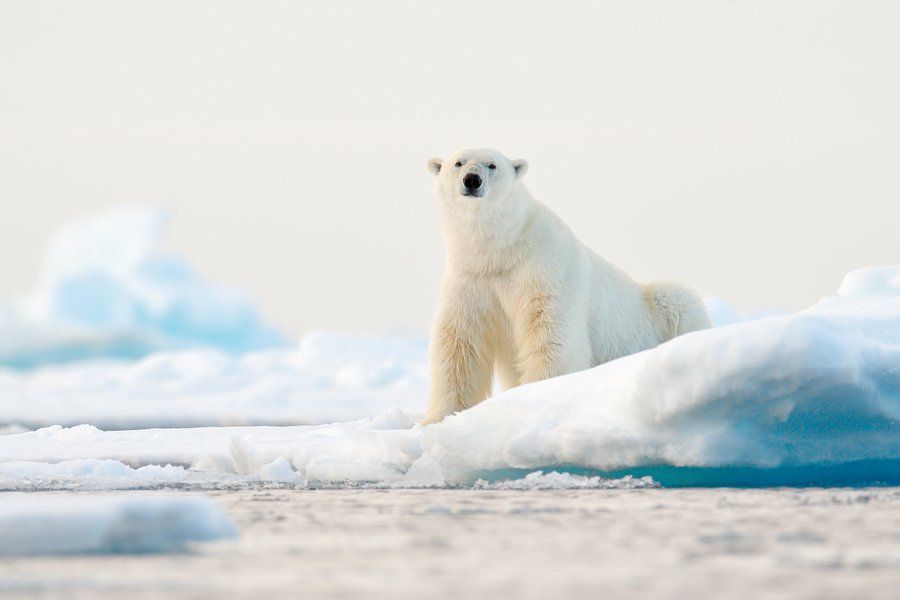
The largest polar bear recorded in Manitoba’s Wapusk National Park weighed over 700 kilograms, though males average 300 to 450 kg and females average 150 to 250 kg when fully grown. (Photo: Adobe Stock)
“We were really surprised by the amount of variation we saw among individuals,” Pagano said.
In 2014, Pagano and colleagues used similar collars in a three-year study to track bears’ behavior on the Beaufort Sea ice, learning about their behavior, diet, and activities and how they acted when on the sea ice, so the terrestrial study aimed to provide even more data.
The researchers knew that polar bears have been observed feeding on terrestrial food sources in the past, such as grasses, kelp, and birds, but with this study, they were able to learn more about what each bear ate over the study period. They found about 70 per cent of the bears were actively looking for food during this time. They found that 94 per cent of bears in the study ate vegetation, like grasses and kelp, while 56 per cent ate berries, 39 per cent bird carcasses, 33 per cent chewed on bones, and 17 per cent gnawed on antlers from caribou. They also found individual bears to eat small land animals like rodents and hares, as well as bird eggs, and even an instance each of feeding on a seal and beluga.
Surprisingly, they found three bears embarking on lengthy swims. One subadult female swam 175 kilometers and found a beluga carcass,, though she was only able to feed on it for 35 seconds. They found she mainly used it as a buoy, perhaps unable to eat much of it in the water.

Researchers found that 94 per cent of bears in the study ate vegetation, like grasses and kelp. (Photo: Adobe Stock)
Another female swam for 120 kilometers, finding a seal during the 7-hour swim, but only fed on it for 20 seconds or so. Pagano said it appeared she was trying to bring it to shore, but dropped it, showing the bears may not be able to feed as well in water as on ice.
“These observations suggest to us that the bears likely can’t eat and swim very well,” Pagano says. “They need a solid platform to be able to eat, either the sea ice or the land,” Pagano says
To get through periods with limited food supplies, many animals will conserve energy and rely on their stored reserves, while others will move around to seek out food. However, the researchers found that both strategies had similar results. While terrestrial foraging helped compensate for the increased activity level of foraging, it did not help the bears gain mass or increase the time they could stay on land before starvation.
They found 19 out of the 20 bears lost mass during the 19 to 23-day study period, ranging from 0.4 to 1.7 kg of loss per day, which was consistent with previous studies that found the bears lost an average of a kilogram per day on land. At the end of the study, only two bears showed evidence in their blood work that they had recently eaten.
Studies show that as the ice-free period lengthens, polar bear litter sizes may decrease and starvation may occur. One study predicted up to a quarter of male adults would starve if the length of time on land reaches 180 days.
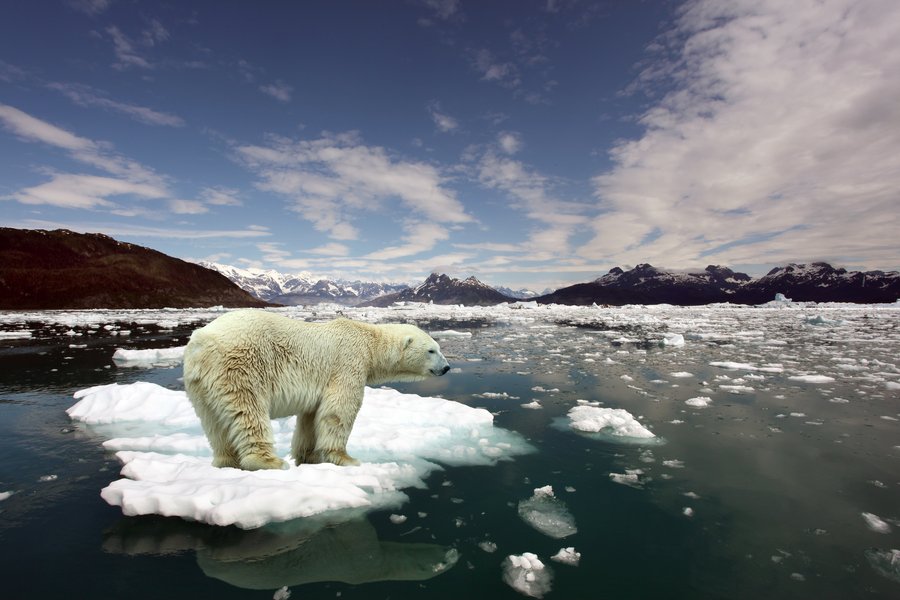
Ringed seals and bearded seals are some of polar bears’ primary food sources—especially during the pupping and weaning seasons. (Photo: Adobe Stock)
“We know that polar bears are increasingly reliant on summer land use throughout much of their range in the Arctic due to climate warming,” Pagano says. “Studies have suggested that polar bears are going to be at pretty extreme risk of starvation in the future.”
He says that the bears have been found to feed on a wide variety of foods on land, but it doesn’t seem to be enough. The authors wrote in the Nature Communications article, “Although polar bears on land exhibit remarkable behavioral plasticity, our findings reinforce the risk of starvation, particularly in subadults, with forecasted increases in the onshore period.” Pagano says this comes down to what foods are available in the bears’ terrestrial locations.
“Bears are pretty renowned for being curious, and creative, and finding food resources basically in any type of landscape that they occur in,” Pagano says. “That’s really what we’ve found is that these bears will switch to an omnivorous diet and feed on pretty much anything that’s in the area around them if they can find it. But, in this case, the foods that are available to them in this region aren’t adequate enough to sustain them.”

